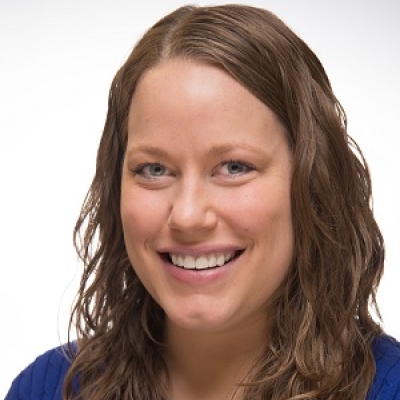Last year, hundreds of business and industry leaders, educators, state policymakers, and advocates gathered in downtown Columbus for Aim Hire, a day-long conference focused on workforce development hosted by Ohio Excels and the Governor’s Office of Workforce Transformation. Thanks to the Covid-19 pandemic, this year’s event looks a little different—rather than a single, day-long affair, there are five separate virtual events sprinkled throughout the fall—but the importance of the convening and the information it provides hasn’t lessened.
Take, for instance, the third virtual session, “Building Cred: Ohio Workers Benefit from Earning Industry-Recognized Credentials.” The event opened with remarks from Rob Brundrett, the director of public policy at the Ohio Manufacturers’ Association (OMA). He noted that manufacturing is Ohio’s number one industry, and that the Buckeye State is the third largest manufacturing state in the country. While there are relatively high unemployment numbers due to Covid-19, manufacturing continues to face serious workforce shortages despite being the “powerhouse” of the state’s economy.
To shed some light on these shortages, Sara Tracy, the Managing Director of Workforce Services at OMA, spoke with two members of the association. Amy Meyer, the Chief Organizational Development Officer at the Rhinestahl Corporation, discussed how her organization has prioritized developing a talent pipeline. “We know now, and in the next ten to fifteen years, we’re all going to continue to struggle with the students that come into manufacturing,” she shared. “We need employees and we need skilled tradespersons...so we roll up our sleeves and we have the mission of filling programs with students who can potentially have a great career in manufacturing.”
Ms. Meyer acknowledged that credentials have become increasingly important over the last few years, and shared that her company views them as an opportunity to “raise the bar” for themselves, their region, and the state as a whole. “The better our workforces are skilled...the more we get to say to our toughest customers, you know, we can handle it here.” Marzell Brown, the Talent Acquisition Lead at Rockwell Automation, echoed those sentiments. He shared that his organization has “a ton of folks who go through those credentialing programs.” Because they are backed by industry-recognized companies, students are able to get “legitimate” credentials in high school that can lead to a job and help them earn college credit.
Mr. Brown also emphasized how important it is to ensure that credentials “stand the test of time” and are truly meaningful for students. To that end, he spoke about how his company has worked with districts in Cleveland and several inner-ring suburbs to create robotics programs for high schoolers. These programs, in concert with additional local partnerships, make it possible for students to earn all twelve points needed to complete one of the state’s graduation pathways. The programs are also linked to postsecondary options—namely at Tri-C, the local community college. “We have a number of pathways and drop in and drop off points based on where a student wants to go,” he said.
Next, John Sherwood, the Workforce Project Manager for the Governor’s Office of Workforce Transformation, spoke about the state’s recently created TechCred program. He described how the overarching goal of the initiative is to help Ohioans earn industry-recognized, technology-focused credentials and to help businesses upskill both current and potential employees. To accomplish this, the General Assembly allocated just over $12 million per year for two years to reimburse employers for bearing the cost of credential training for employees. Both Ms. Meyer and Mr. Brown touted the benefits of TechCred. “I think the state has done a phenomenal job of putting their money where their mouth was on this one,” Mr. Brown said. Ms. Meyer agreed. “Tech Cred dollars and the ease with which that process has been happening has been a game changer for Rhinestahl…we couldn’t do upskilling and credentialing without that help,” she said.
They aren’t the only ones who approve. So far, the program has been a hit. After five application periods, 983 different Ohio employers were awarded a slice of the $12 million, resulting in 11,941 credentials versus the state’s original goal of 10,000. Mr. Sherwood pointed out that there are “a ton of repeat customers” due to the simplicity and efficiency of both the application process and the program itself. 268 employers received awards in multiple rounds. The pandemic hasn’t seemed to dull the interest, either. “Going into the first application period during Covid-19, we were a little unsure,” he shared. But by the end of June, the state was looking at a record-setting application period. “The crisis and the new way we’re conducting business...has accelerated demand for technical skills. We’ve seen even more companies interested,” he said.
Mr. Sherwood noted that because the program is paid for through the state budget, funding will need to be included in the next budget that will be proposed in 2021. Given the current fiscal crisis caused by Covid-19, state leaders are taking a critical look at all programs. Nothing is guaranteed. But Mr. Sherwood expressed optimism. “I think the success of TechCred thus far makes a really good case for the continuation of the program,” he said.
The same could be said for all of Ohio’s industry-recognized credentialing efforts. The number of students who are earning a credential prior to high school graduation has risen, and employer demand for TechCred signals that credentialing numbers are growing outside the K–12 sector, as well. Attainment Goal 2025 is still looming in the distance, and it’ll be a steep climb to ensure that Ohio can meet its target of 65 percent of adults having a post-secondary credential or certification. But one thing’s for certain: Ohio’s leaders and businesses are stepping up to help the state reach its lofty goal.




